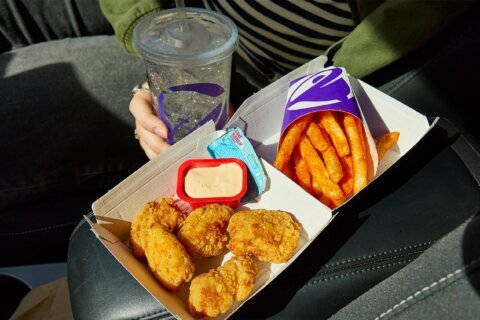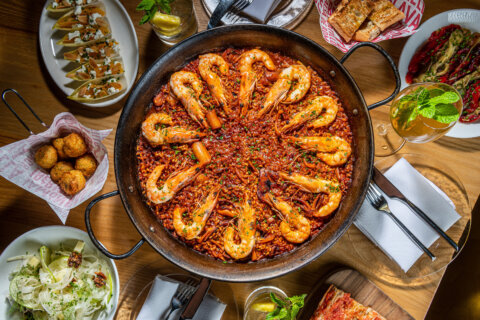Why did you choose the foods you ate yesterday? Let’s take a look at your breakfast: Did you scramble some eggs, put a slice or two of whole-grain bread in the toaster and brew a steamy mug of tea? Or, did your morning begin with a muffin or doughnut and a cup of coffee at a local shop on the way to your office? Perhaps you shoved down a few bites of your kid’s lunch while standing at the kitchen counter before shoveling him into the carpool. Maybe you skipped breakfast altogether.
[See: Here’s What People in 9 Other Countries Eat for Breakfast.]
Whatever your reason (or excuse) was, you actually had to think about what you were going to do before making that breakfast choice. And that was only the beginning of the more than 200 food decisions you likely made throughout the day, according to research by Cornell Food and Brand Lab director Brian Wansink.
So how do we make those decisions? Surveys have consistently shown that the main drivers of our food choices are taste, convenience and price, but new factors may be dictating what goes on our plates. According to a study from Deloitte, Food Marketing Institute and Grocery Manufacturers Association, factors including health and wellness, safety, social impact, experience and transparency are all influencing purchasing decisions. Here’s what else may come into play — and how you can use them to make healthier decisions:
1. Hidden Persuaders
We often have good intentions about curbing our intake until temptation takes over, whether that’s in the form of jelly beans in a glass jar on the countertop or free samples at the supermarket. Wansink calls these “hidden persuaders.” Supermarkets know them well; in fact, they are set up to influence how you shop. By placing appealing items such as freshly cut flowers or baked loaves of bread at the entrance of the store, for instance, you may be more drawn to buying those products. That’s why 60 to 70 percent of what ends up in our shopping carts is unplanned.
2. A (Seeming) Lack of Choice
If you’re at an all-day meeting that includes lunch or are a dinner guest at a friend’s house, you may not have much of a say when it comes to what foods you’re deciding between. Other times, however, you may blame poor food decisions on the fight you had with your husband, the kids who made you crazy or the boss who didn’t give you a raise. In reality, the person who made you dig your fork into that food and lift it to your lips was no one but you.
3. What’s in a Name
When products are given descriptive names, such as “freshly baked,” “homemade,” “natural” or “wholesome,” they appear more attractive. Restaurants are well aware of this phenomenon. Wansink has shown on numerous occasions that certain glasses, plates and menu descriptions can unknowingly cause us to eat too much. He found that when descriptive names — think “black forest double chocolate cake” as opposed to “chocolate cake” — are used on menus, people rate the foods as tasting better.
Further results showed that descriptive menu labels — such as “grandma’s zucchini cookies” or “succulent Italian seafood fillet” — increased sales by 27 percent, improved attitudes toward the food and restaurant, and made people more likely to say they’d return to that establishment. Respondents even indicated that they would be willing to pay almost 10 percent more for each descriptive menu item. Making foods more alluring via descriptive names is not limited to restaurants. Manufacturers love to attract shoppers in supermarkets with eye-catching displays, fancy packaging and striking names for basic foods.
[See: 7 Ways to Hack Your Grocery Trip for Weight Loss.]
4. Food Labels
Even boring-sounding food labels can influence you. When faced with food labels declaring products’ “fat-free” or “sugar-free” status, consumers in Wansink’s research acted as if they received an invitation to indulge and ended up eating large portions sizes. This is a common mistake. While such terms on food labels provide helpful information to consumers concerned about meeting their dietary recommendations — particularly if they have special requirements like needing to watch their blood sugar — they don’t automatically mean that the food is calorie-free. In fact, overeating these “free-from” foods could be costly. Make sure you check the calories and serving sizes listed on the nutrition facts panel and pay close attention to how many servings are contained within one package.
5. The Company You Keep
Although many studies have shown that your genes play an important role in whether your jeans fit, other research has shown that your life at home, or your environment, also has a significant effect on what you’re putting in your grocery cart. The people around you may also influence you more than you realize about, say, whether to have fries or a salad with your sandwich. External influences can be powerful, and they can work for or against you.
I’m not suggesting that you choose your partner, friends or social contacts in accordance with their eating style, but if you’re trying to watch your weight, it may help to become more aware of how the people in your life affect the choices you make at the table. Stick to your guns: Choose food because you need it ( you’re hungry) or because you want it (perhaps it’s caloric, but you’ve decided it’s worthwhile). If you’re dining in a restaurant, try to think about what will be on the menu ahead of time and, if you’re going food shopping, be sure to bring your list with you and don’t shop hungry.
[See: 7 Diet Mistakes Sabotaging Your Weight Loss.]
Don’t eat because of anyone else, because no one else has your body. Perhaps the bottom line is to listen to what your mother told you: Choose your friends — and your food — wisely.
6 Ways to Train Your Brain for Healthy Eating
More from U.S. News
7 Ways Technology Can Torpedo Your Health
9 Things That Are Surprisingly Good for Your Health
The Psychology of Food Choices originally appeared on usnews.com







